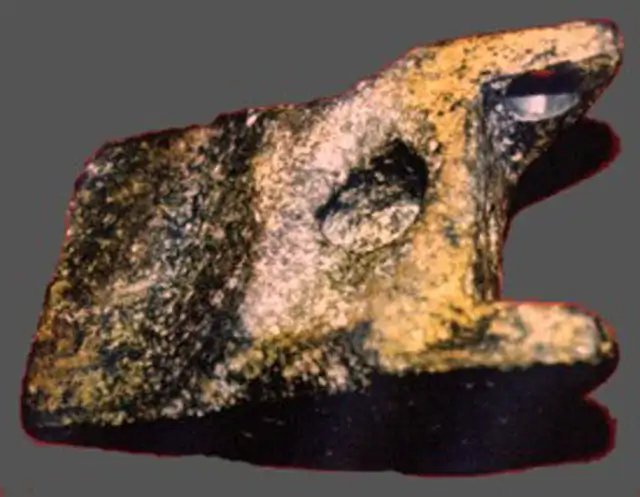Wedge of Aiud

Wedge of Aiud

The Wedge of Aiud (Romanian: călcâiul din aluminiu de la Aiud or obiectul din aluminiu de la Aiud) is one of out of place artifacts found in Aiud (Romania) in 1974 [0].
It is measured to be 20.2 cm long, 12,5 cm wide and 7 cm high.
It weighed in at approximately 2.3 kg.
It has two arms and two cylindrical holes.
According to Boczor Iosif, a contributor to Hungarian paranormal magazines, it was found under thirty-five feet of sand and alongside two mastodon bones.
The object was allegedly taken to the Archeological Institute of Cluj-Napoca to be examined, where it was found to be composed of 89% aluminium covered by a thick oxide layer.
The object also contains another 12 metals.
The layer of oxide is no less than a millimeter thick.
According to some estimates, the thickness of oxide indicates an age of at least three hundred to four hundred years old.
Other estimates claim that the object is 250,000 year old [4].
It is not mentioned what dating technique was used.
According to the article mentioned above, by Boczor Iosif, it was examined a second time in Lausanne, Switzerland, with the same results.
It was not mentioned which establishment carried out this second analysis.
This artifact is considered anomalous because aluminum was not discovered until 1808 and not produced in quantity until 1885.
For some, this represents a proof [3]that the metallic object is an old UFO fragment since the substance it is made of cannot be combined with the technology available on Earth.
According skeptics [1], the mystery object is almost certainly an excavator tooth, since certain aluminum alloys were used in the past in situations where striking sparks would be dangerous, as in coal mines with gas.
At present, the Wedge of Aiud is reported to be housed in the Museum of the History of Transylvania [2].